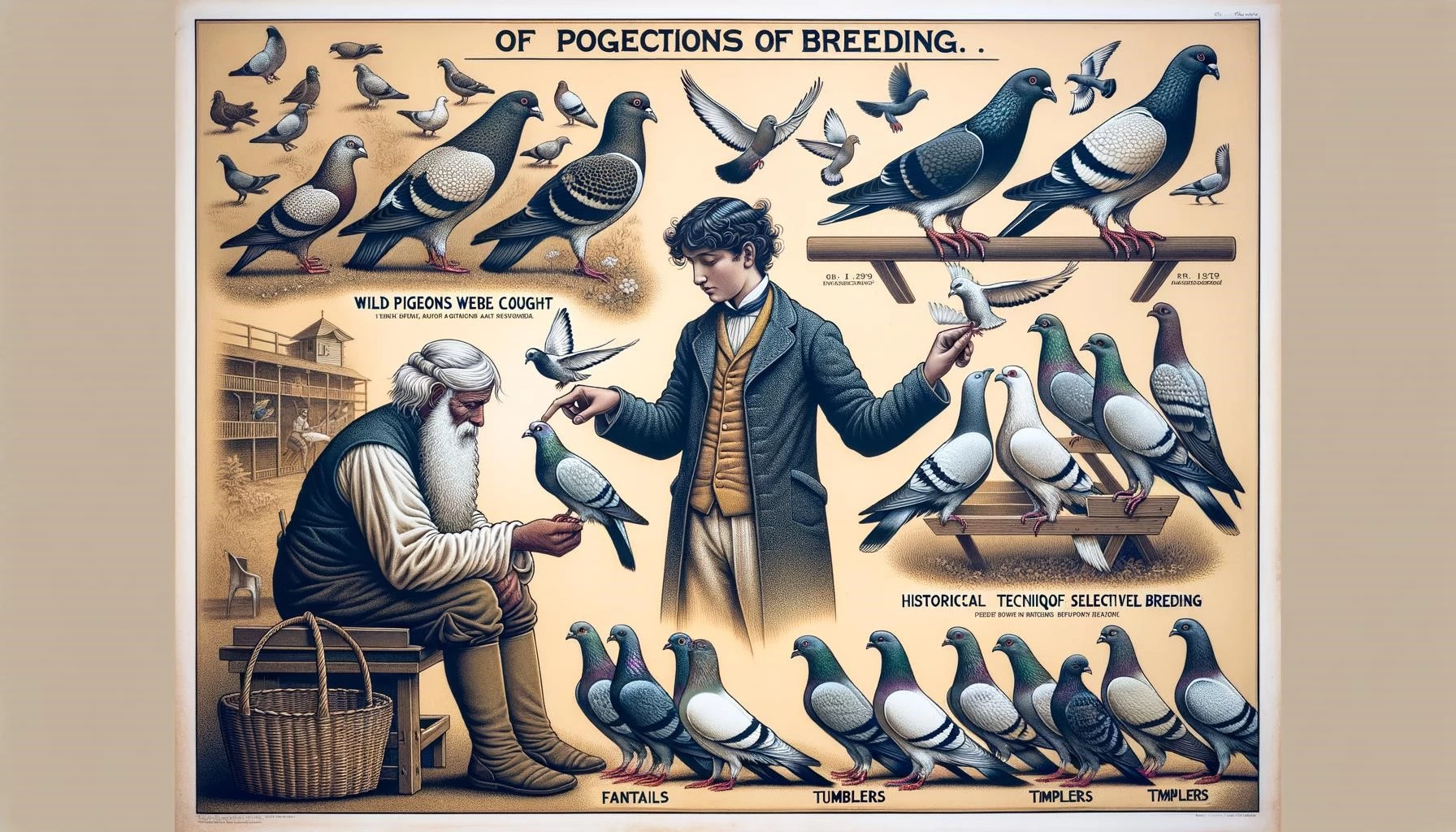Pigeons are one of the most fascinating and widely spread birds in the world. They have a rich history that dates back thousands of years and have been bred by humans for various purposes. In this article, we will explore the origins of pigeon breeding, from their wild ancestors to the domesticated breeds we see today.
Key Takeaways
- The domestic pigeon is a subspecies derived from the rock dove or rock pigeon, which is believed to be the world’s oldest domesticated bird.
- Pigeon breeding has been practiced for at least 5,000 years and has resulted in the significant morphological and behavioral modifications of domesticated pigeons.
- The wild ancestor of domestic pigeons is the rock pigeon, which is known for its adaptability and strong homing instincts.
1. Wild Ancestors: The Rock Pigeon
The domestic pigeon, also known as Columba livia domestica, is a subspecies derived from the rock dove or rock pigeon. The rock pigeon, also referred to as Columba livia, is the wild ancestor of domestic pigeons. These birds are found in cliffs and coastal regions across the globe and are known for their adaptability and strong homing instincts.
The rock pigeon laid the foundation for the intricate relationship between pigeons and humans. Their ability to navigate and find their way back home was one of the reasons why they were domesticated and bred by humans.
2. Early Domestication and Pigeon Keeping
The domestication of pigeons can be traced back to ancient civilizations. Mesopotamian cuneiform tablets and Egyptian hieroglyphics mention the domestication of pigeons more than 5,000 years ago, making them one of the first birds to be domesticated by humans.
Pigeon keeping, also known as pigeon fancying, is the art and science of breeding domestic pigeons. It has been practiced by humans in almost every part of the world for thousands of years. Throughout history, humans have substantially altered the morphology and behavior of domesticated pigeons to suit their needs for food, communication, and various other purposes.
3. Evolution of Pigeon Breeds
The selective breeding of pigeons by humans has led to the development of numerous pigeon breeds, each with its own unique characteristics and appearance. Pigeon enthusiasts and breeders have created hundreds of different breeds with names like Arabian Trumpeter, Fairy Swallow, and Danish Jacobin, featuring various plumage colors and patterns.
Charles Darwin, renowned for his theory of evolution, studied and bred domestic pigeons extensively. In fact, his observations on pigeon breeding and variation helped inform his ideas on natural selection and evolution. Darwin’s experiments with pigeons revealed the power of artificial selection and the potential for breeding to drastically modify the appearance and behavior of domesticated animals.
In conclusion, the origins of pigeon breeding trace back thousands of years to the domestication of rock pigeons. Pigeon keeping and selective breeding have resulted in the significant modification of domestic pigeons, leading to the diverse array of pigeon breeds we see today.








